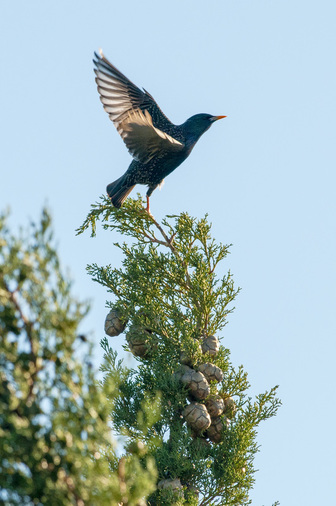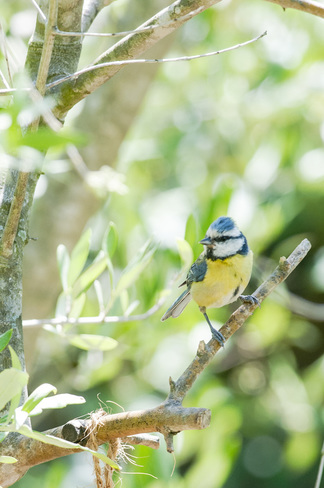by Robin Noble
Especially if you have lived, as Martine and I have, in the far North of Scotland, you can find the climate here hard to believe; until well after the middle of November, the weather was better than the average British summer (let alone that of 2015!), and, over a short period, I decided I must take full advantage of it. The intention was to explore the extremes of our wonderful area, from (close to) the highest point, down to sea-level.
So, one weekend, I went up to the high foothills of Canigou, to the Tour de la Batere, one of our favourite places. It was comparatively busy, with a few of what I think are called para-gliders, and some spectators, which may be the reason why I saw no marmots. And there were almost no wildflowers, either, which was hardly surprising; the exception was one single gentian, small but vividly blue. The groups of horses, cows and sheep, all very discrete and self-contained, were roaming the hillsides, still grazing and maintaining the short turf which allows such flowers to flourish up here.
I had a lovely walk around, the air was brilliantly clear, but saw few birds apart from the occasional black redstart flitting between the rocks. When I returned to the car, a raven flew overhead, at first simply doing its usual “cronk, cronk“. Then the call speeded up, and sounded more alarmed, so I looked for it in the binoculars. What I could then see was that the raven, large and impressive ‘though it was, was being harried by a falcon of some sort. This bird did look surprisingly small beside the raven, but was quite heavy in build, anchor-shaped, and made repeated dives at the other. I came to the conclusion that it was a young peregrine, simply having fun, just trying out its skills at the expense of the larger bird. Had it been early summer, breeding-time, I am sure it would have been pursuing the raven with a vengeance, and I would have heard its high, angry, rasping call. I did wonder idly whether it would have a sally at the para-gliders, one of which was sailing silently by, but that never happened.
Alerted by Lesley that she had heard a distant group of cranes, I also made a few visits to the Etang, right down on the coast, (and, originally, presumably, an inlet of the sea). The weather, although still fine, was windy, and in such conditions, according to the invaluable Albera book, the cranes may shelter in the Etangs. From the hillock about which we were writing at the time of the spring migrations, you get a fine view over part of the water, the marshes proper, and some cut, but clearly wet, meadow, surely the perfect habitat for migrating cranes. So it may be, but on the occasions I visited, there were none to be seen or heard. The flamingos were tucked into the relative shelter of a bay, cormorants still flying around, herons lurking in the tall, marsh grasses, but there were no cranes. True, a most obliging, (and very dark) marsh harrier made its appearance, and I had wonderful views as it flew low over the long grasses and reeds.
I did in fact, one day, see a crane; a single bird, spotted briefly as I was driving to St. Nazaire and the hillock. I had a good enough view to be sure that it was a crane, and to speculate that it might be a juvenile, because of its rather indistinct markings, but it disappeared behind a hedge and that was the last I managed to see of it! Perhaps it was a young bird which had become separated from a larger, migrating group in the tramontane, or perhaps it was the last of a flock which was descending into a field beyond the impenetrable hedge - tantalising!
During one of these days by the Etang, I was reminded how attractive the most common birds can be. I was close to the Fishermen’s Huts across the water from the hillock, and it was very windy-as it so often seems to be there. Not much was visible apart from a small group of starlings, working their way over the ground, close to me. These were all adults, and I was reminded how dramatic their markings actually are when looked at closely. We take them for granted, perhaps, but they do look remarkably exotic when studied. Here's one that Isobel captured with her camera on a different day.
| Now that something vaguely like winter has come, and there is snow on Canigou, the tits have come into the garden in some numbers, and the same is true of them, especially perhaps of the little blue tit, which is, in fact, much brighter than most books show; study it carefully, and you will come to the conclusion that it would not look out of place in the forests of Costa Rica. The commonplace can be astonishingly beautiful. Thanks, again, to Isobel for this photo. |

